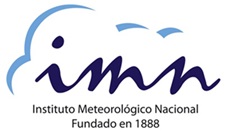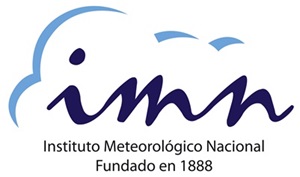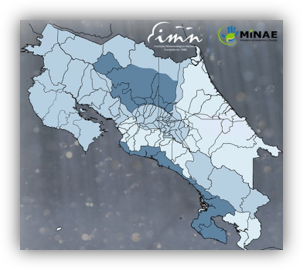Weather warnings
Jul
15
Informative Weather Advisory
Saharan Dust and Strong Wind Gusts Affecting Several Regions
July 15, 2025
9:00 am
A dry air mass accompanied by Saharan dust is positioned over the Caribbean Sea and Central America. Additionally, a marked atmospheric pressure gradient is accelerating the trade winds...
Jul
14
Aviso Meteorológico
Onda tropical #15 transitando este lunes por el país
14 de julio de 2025
10:00 AM
Diagnóstico: La onda tropical #15 ingresó al país durante la madrugada. Aunque es una onda débil, ha generado lluvias y tormentas en zonas marítimas del Pacífico Central, el Caribe y en áreas...
Jul
13
Aviso Meteorológico Informativo
Tropical Wave #15 transiting over Costa Rica early Monday morning
July 13h, 2025
6 p.m.
Diagnosis: During the course of early Monday morning, tropical wave #15 will be passing over the national territory. Although it is a weak tropical wave, it will be interacting with the...
Jul
11
Weather Warning
Tropical wave #14 over Costa Rica this Friday
July 11th, 2025
9:50 a.m.
Diagnosis: The high humidity level across the country and the current instability are a result of Tropical Wave 14, which is positioned over the country this morning. Scattered showers have...
Jul
10
Weather Warning
Tropical Wave 14 to Pass Over Costa Rica This Friday
July 10, 2025
04.30 p.m.
Discussion: A change in the weather pattern toward more humid and unstable atmospheric conditions over Costa Rica and surrounding areas will increase the occurrence of rainfall in various parts...
Weather warnings history
In this section you will find the weather warnings history.
Informe Meteorológico-IMN-200120-430pm
Jan
20
Weather Report
The windy pattern will persist in the country due to the entry into the Caribbean Sea of cold push # 17 in addition to the rains in the Caribbean and North Zone tonight
January 20, 2020
4.30 p.m.
Diagnosis: The rains in the last hours in the Caribbean have decreased intensity, but it continues to rain mainly near the mountainous sectors. The accumulated rainfall from 7 a.m. have not exceeded 32 mm. With regard to winds, the gusts have not increased in intensity since the last report, so it is maintained that the North Pacific is the windiest region, with speeds 50-70km / h, with a maximum burst of 92km / h in La Cruz and near the Cordillera de Guanacaste.
Forecast: The strong windy pattern will continue in much of the country and at least until Wednesday, this due to the entry of a new cold thrust into the Caribbean Sea tonight, which will keep the trade winds accelerated. Occasional gusts are forecast in Guanacaste, the Central Valley and the mountain ranges with maximum intensities estimated between 40-80 km / h for the lowlands and between 50-100 km / h in the mountains.
Regarding the rains in the Caribbean, they are expected to occur near the coast of Limón during the night, with amounts between 10-20mm and maximums in a timely manner between 25-50mm. In the mountainous sectors of the Caribbean and the North Zone, there will be weak rains throughout this period, with amounts between 5-10mm and maximums of 15-20mm.
Special attention to areas with vulnerability to floods because due to the persistence of rainfall in the area during the last days the soils are saturated. It is recommended to be aware of the official communiqués of the National Emergency Commission, as well as of the official entities.
Next report today at 10 p.m.
Due to the above, the IMN recommends:
• Extreme precautions due to strong winds and their possible impact on roofs, electrical wiring, signs, trees; as well as in the mountainous parts of the country (national parks, volcanoes).
• Caution for boats by choppy sea and very strong waves in the North Pacific, Gulf of Nicoya, Central Pacific and the Caribbean Sea, as well as air navigation due to turbulence over the mountainous sectors.
• Avoid burning of all kinds as they can get out of control.
• Caution in areas vulnerable to flooding due to sewer saturation, increased flow in rivers and streams, and in areas prone to landslides.
• Stay informed through social networks, Twitter: @IMNCR, Facebook: National Meteorological Institute and the Website: www.imn.ac.cr
Juan Diego Naranjo Díaz
Meteorologist
DMSA-IMN
 RSS IMN latest alerts(Local Notification): https://www.imn.ac.cr/en/web/imn/avisos-meteorologicos/-/asset_publisher/lTlyP4wEZlDa/rss
RSS IMN latest alerts(Local Notification): https://www.imn.ac.cr/en/web/imn/avisos-meteorologicos/-/asset_publisher/lTlyP4wEZlDa/rss 


